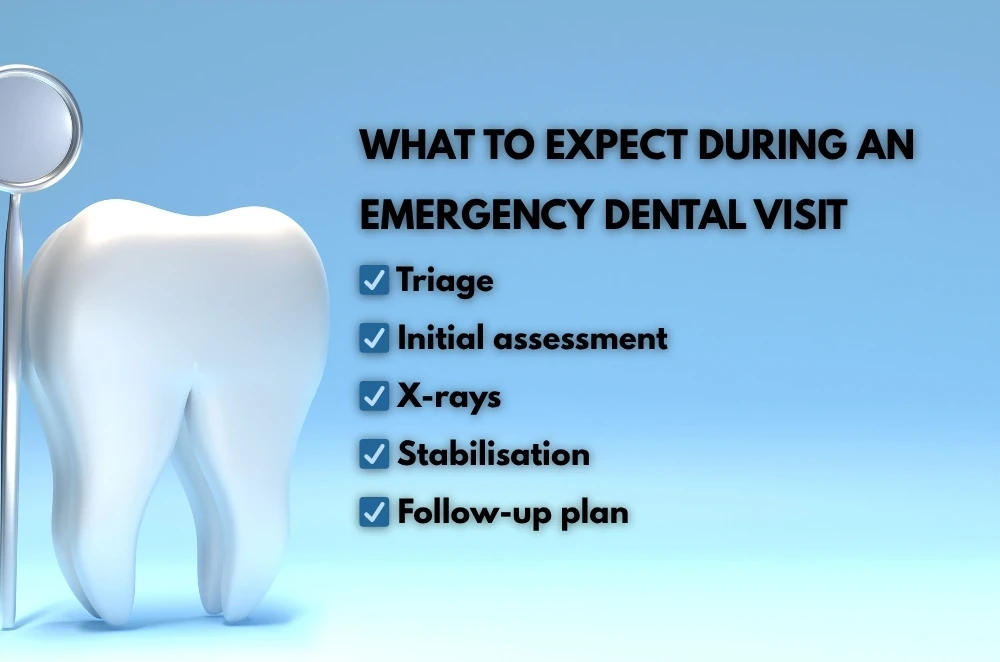Dental problems have a nasty habit of showing up unannounced — usually after hours, or worse, on weekends. But how do you know when it’s truly an emergency?
Here’s the difference: a mild toothache can wait, but if you're experiencing severe pain, swelling, uncontrolled bleeding, or you’ve knocked out a tooth, it's time to act fast. These are all warning signs that shouldn't be ignored.
I learned this the hard way during a camping trip when a friend slipped and chipped his front tooth on a rock. There was blood, pain, and panic, and no dental clinic for miles. We rinsed with bottled water, found a tissue to control the bleeding, and drove to the nearest emergency dentist, three towns away.
It was a messy wake-up call, but we were lucky. Having quick access to a clinic that offers emergency tooth repair can genuinely save your smile. These services are equipped to handle trauma like broken teeth, lost fillings, abscesses, and infections — all situations where time matters.
First-aid steps you can take (and when not to DIY)
When you're in pain, it’s tempting to fix things yourself. While home first aid is sometimes helpful, it should never replace professional medical care.
Here’s what you can do before reaching a dentist:
- Rinse your mouth with warm salt water to reduce bacteria.
- Use a cold compress to minimise swelling.
- Apply gauze to control bleeding.
- If a tooth is knocked out, place it in milk or saline solution, not water.
- Take pain relief like ibuprofen (avoid aspirin if bleeding is involved).
Health’s oral care tips also highlight practical ways to manage dental injuries safely until you get professional help.
But — and it’s a big but — don’t try to glue anything back in place. Don't poke around with tweezers or cotton buds. And don’t ignore symptoms that are getting worse.
What to expect when you arrive

It’s completely normal to feel nervous about an emergency dental visit, especially if you’re in pain or unsure of what’s going to happen. But knowing the general process can help reduce some of that anxiety.
Here’s what most emergency appointments involve:
- Triage – The receptionist will assess how urgent your case is and get you in as soon as possible.
- Initial assessment – The dentist will examine the affected area and ask about your pain level and history.
- X-rays – These are often done straight away to rule out fractures, infections, or underlying damage.
- Stabilisation – They’ll do what’s needed to relieve immediate pain and stop any active bleeding.
- Follow-up plan – You’ll be given options for further treatment, whether it’s a filling, root canal, extraction, or referral.
Most clinics aim to treat emergencies on the same day, or at least stabilise them so you’re safe and out of pain. The rest can usually be managed in follow-up appointments.
Don’t wait for disaster — prevention still wins
Emergency care is crucial, but the truth is that most dental emergencies could be prevented with routine care. Cavities don’t usually form overnight. Gum disease builds slowly. And small cracks in a molar often start months before the tooth finally breaks.
I skipped my checkup during lockdown. No big deal, I thought — until I bit into a crusty sourdough loaf and cracked a tooth I didn’t even know was weakened. That one missed appointment turned into three months of pain, root canal therapy, and a very real appreciation for prevention.
This is why keeping up with your local dental checkup schedule matters so much. Early detection gives you more options, less pain, and lower costs.
If your current clinic doesn’t do weekend hours or you’re in a remote area, it’s worth researching accessible clinics nearby. Convenience can be a deal-breaker when pain hits.
Be prepared: Dental emergencies at home
It’s a good idea to keep an emergency dental kit, especially if you have kids, play sports, or live far from a clinic. You can buy one online, but putting one together yourself is simple and affordable.
Here’s what to include:
- Gauze or cotton pads
- A clean container with a lid (for broken teeth)
- Gloves
- Temporary dental cement or wax (available at most chemists)
- A small mirror and torch
- Salt packets
- Pain relievers
- Dentist’s contact card
You’ll thank yourself the next time your child chips a tooth on a trampoline or your filling pops out after dinner.
Real stories help — know what to expect
First-time emergencies can feel like medical dramas — but they’re more common than you’d think. People arrive scared, swollen, and unsure if they’ve waited too long. It’s why realistic info can be so helpful.
For what it’s like to walk through the doors in a crisis, urgent dental appointments are worth bookmarking.
It covers everything from initial panic to post-visit relief — a helpful read if you’ve never experienced it yourself.
Final thoughts
Dental emergencies strike without warning—one moment everything feels fine, and the next, you're in pain and scrambling for solutions. That’s why preparation is essential. Save your dentist’s contact details in your phone, know the basics of first aid for common dental issues, and stay calm when a crisis hits. The best way to deal with dental emergencies, however, is to prevent them. Routine checkups and early detection of problems can stop small issues from escalating. Don’t wait for pain to remind you. Be proactive, stay informed, and take preventive care seriously—it’s your strongest defence against unexpected dental disasters.


